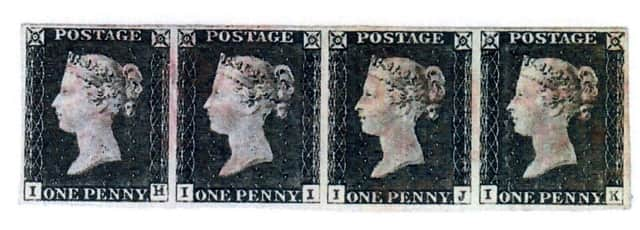Collecting: Postal inflation from 1840


Well let's look at what that means in terms of the cost of sending a letter today compared to that of our Victorian forebears.
The cost of sending a letter on the 5 May 1840 was standardised at one old penny with the introduction of the Universal Penny Post and the issue of the penny black stamp.
Advertisement
Hide AdAdvertisement
Hide AdBefore this date postage costs depended on weight and distance travelled and it was expensive; London to Sheffield was 10 old pennies.When comparing with modern day prices there are a number of things to take into account, besides the fact that an old one penny, which is actually 1/240 of a pound, is effectively 0.41p in today's money.
There is a difficulty in working out inflation over a long period of time; the current method uses an equation based on the Consumer Price Index (CPI).
So comparing between two dates with known CPIs, for example 1975 and 1985, you'll find that £1 in 1975 will need to be £2.51 in 1985 in order to buy the same amount.
Now 1840 doesn't have a CPI so someone has to work out a reasonable CPI for that date which is not straight forward as commodities, mortgages and other items in the basket are worth either relatively more or less or don't exist.
Advertisement
Hide AdAdvertisement
Hide AdBut lets keep it simple and use the Bank of England's own inflation calculator.
They say that £1 in 1840 now has a purchasing power of £81.55, so divide by 240 and one old penny now has a present day value of 33p.This suggests that postal inflation exceeds actual inflation, this is not surprising as the postal costs in 1840 were based on low wages, no social security and no pensions for the average postal worker.
But nothing is straight forward, in 1840 the Universal Penny Post was set low so as to encourage more people to use the post for the first time, and demand rose exponentially with the post office's income rising rapidly with it.
However, if we compare the postal rate before May 1840 for a letter from London to Sheffield, that would have cost 10 old pennies, this would now cost £3.30 - so maybe there is a reasonable comparison to be made to the new postal charges?
Advertisement
Hide AdAdvertisement
Hide AdAs the use of Royal Mail to send letters is currently declining rapidly will the cost of sending a letter soon be comparable with pre-1840?
For those interested the pre-1840 London to Sheffield postage rate is shown in “A List of Post-Towns and Principal Places; with the Postage of a Single Letter to or from London, According to the Actual Routes of the Post” published in March 1830 by Francis Freeling, the Post Office Secretary.
This article has been brought to you by Sheffield Philatelic Society if you wish to know more visit our website on www.sheffieldps.org.uk or email [email protected].